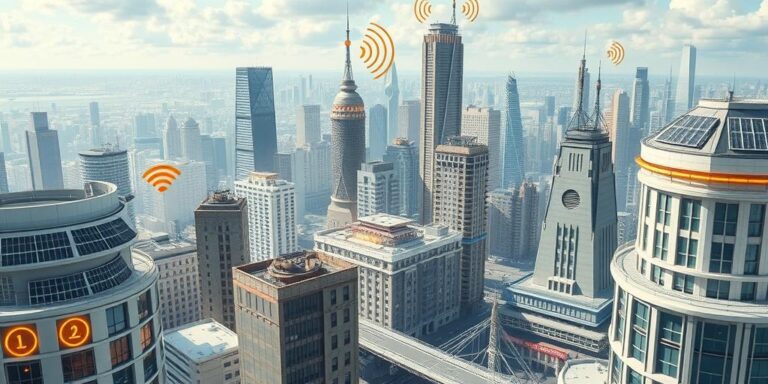Energy Harvesting Technologies for Self-Powered Gadgets (2028)
Imagine a world where your gadgets never run out of battery. A world free from the tyranny of charging cables and power outlets. This is the promise of energy harvesting, and in 2028, it’s closer to reality than ever before. Energy harvesting, also known as power harvesting or energy scavenging, is the process of capturing small amounts of energy from the environment and converting it into usable electrical energy. These sources can include solar, wind, thermal, mechanical vibrations, and even radio frequency (RF) energy.
Why Energy Harvesting?
The need for energy harvesting technologies stems from several key factors:
- Proliferation of IoT Devices: The Internet of Things (IoT) is exploding, with billions of devices deployed in various applications, from smart homes to industrial monitoring. Powering these devices with traditional batteries is often impractical and costly.
- Demand for Wireless Sensors: Wireless sensors are becoming increasingly common in various fields, including healthcare, environmental monitoring, and infrastructure management. Energy harvesting offers a way to power these sensors without the need for frequent battery replacements.
- Desire for Sustainable Energy Sources: As the world moves towards more sustainable energy solutions, energy harvesting provides a way to harness readily available ambient energy, reducing reliance on fossil fuels and traditional power grids.
Key Energy Harvesting Technologies in 2028
Several energy harvesting technologies have matured significantly and are now finding practical applications in self-powered gadgets:
- Photovoltaic (PV) Energy Harvesting: Solar cells have become increasingly efficient and affordable, making them ideal for powering small electronic devices. Advancements in flexible and transparent solar cells have also expanded their applications.
- Thermoelectric Energy Harvesting: Thermoelectric generators (TEGs) convert temperature differences into electrical energy. TEGs are being used to harvest waste heat from industrial processes, vehicles, and even the human body.
- Piezoelectric Energy Harvesting: Piezoelectric materials generate electricity when subjected to mechanical stress or vibrations. Piezoelectric harvesters are being used in wearable devices, smart shoes, and infrastructure monitoring systems.
- RF Energy Harvesting: Radio frequency (RF) energy is abundant in the environment, thanks to the proliferation of cellular networks, Wi-Fi, and broadcast signals. RF energy harvesting can capture this energy and convert it into usable power for low-power devices.
- Electromagnetic Energy Harvesting: Electromagnetic induction can be used to harvest energy from magnetic fields. This technology is being explored for powering sensors in industrial equipment and electric vehicles.
Applications of Self-Powered Gadgets
The advancements in energy harvesting technologies are enabling a wide range of self-powered gadgets:
- Wearable Electronics: Smartwatches, fitness trackers, and health monitoring devices can be powered by body heat or ambient light, eliminating the need for frequent charging.
- Wireless Sensor Networks: Sensors deployed in remote locations or harsh environments can operate autonomously for extended periods, thanks to energy harvesting.
- Smart Home Devices: Thermostats, lighting systems, and security sensors can be powered by solar energy or ambient light, reducing energy consumption and maintenance costs.
- Industrial Monitoring Systems: Sensors used to monitor the condition of industrial equipment can be powered by vibrations or waste heat, enabling predictive maintenance and reducing downtime.
- Medical Implants: Pacemakers, neural stimulators, and other medical implants can be powered by body heat or movement, eliminating the need for battery replacements and invasive surgeries.
Challenges and Future Directions
While energy harvesting technologies have made significant progress, several challenges remain:
- Low Power Output: The amount of energy harvested from ambient sources is typically small, limiting the applications of self-powered gadgets.
- Intermittency: Ambient energy sources are often intermittent and unpredictable, requiring energy storage solutions to ensure continuous operation.
- Cost: The cost of energy harvesting components can be high, making it difficult to compete with traditional batteries in some applications.
Future research and development efforts will focus on improving the efficiency of energy harvesting devices, developing more robust energy storage solutions, and reducing the cost of these technologies. As energy harvesting technologies continue to advance, self-powered gadgets will become increasingly prevalent, transforming the way we interact with technology and the world around us.
Conclusion
Energy harvesting technologies are poised to revolutionize the world of electronics by enabling self-powered gadgets that operate autonomously and sustainably. In 2028, we can expect to see a wide range of applications for these technologies, from wearable electronics and wireless sensor networks to smart home devices and industrial monitoring systems. While challenges remain, the future of energy harvesting is bright, promising a world where our gadgets are always powered and ready to use.




